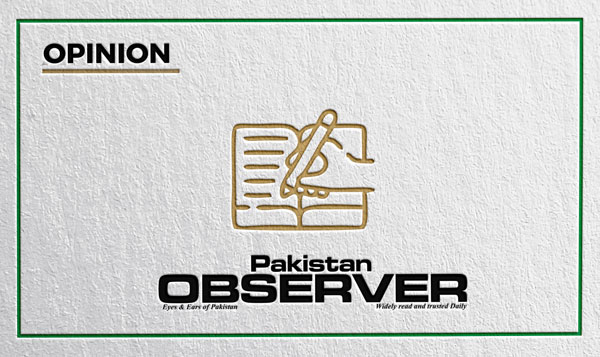Articles and letters may be edited for the purposes of clarity and space. They are published in good faith with a view to enlightening all the stakeholders. However, the contents of these writings may not necessarily match the views of the newspaper.
In defence of defenders
Certainly National Assembly recently did what Parliament has to do much earlier in the backdrop of slanderous campaign against our defence forces “matchless over the globe due to Mohammad Sarwar, MM Alam, Rashid Minhas and related Institutes/Agencies”.
Let’s say wrong to a person not Institutions logically and legally. The tendency turned into a venomous and sustained propaganda with the help/guidelines of our enemies, working on the principle of – divide and rule- since independence de facto.
Though ‘Institutions’ normally not defend themselves publically and the job is left on the Government and political leaders yet, intensity and ferocity of allegations forced senior officers of defence forces to hold a press conference, for explaining (facts) running around some serious issues and developments as part of efforts to put record straight – because, it was most important/urgent for clearing misunderstanding/s (!).
It was/is need of the hour that those elements crossing their limits and becoming tool in the hands of enemies of state (must be) stopped. The sentiments expressed by Parliament were/are understandable as personnel of the defence forces are rendering matchless-services for nation during war and peace for the last 75ys.
If today, we are presenting semblance of economic activity and defence achievements, it is mainly because of sustained efforts/sacrifices of Institution/s like: ISI; MI; army; security; police…So, the nation is bound to ‘salute them’certainly (!!).
As for as allegations against Pakistan Army were/are concerned ISPR had also called on the Government to investigate the matter and initiate legal action against those “responsible for defaming this Institution and (her) officials without delay”.
Now, that a similar demand has also been made through unanimous resolution, people hope, Government will conclude process to logical conclusion instantly for saving pride of the Institution/s. In any way, people are united in-defence-of-defenders of motherland at any cost – (no) argument please (!!).
M AZAMMINHAS
Tatrinote, AK
Pleasures leading us to death
Forbidden pleasures are poisoned bread; they may satisfy an appetite for the moment but there is death at the end” Why do we get addicted? Chemical addiction is substance misuse and dependency on chemicals to deal with certain mental conditions. Most teens start drugs due to peer pressure. “It is better to be alone than sick with someone else’
Drug addiction kills 11.8 million people each year all over the world. The ethanol liquid (Alcohol) has exceeded death rate by up to 80,000 in the world. An article published in Elsevier, 2022 states that drug addiction starts with smoking.
Around 8 million people die prematurely due to Tobacco smoking. For the entire 20th century 100 million people prematurely died because of smoking. Statistically drug addiction has immensely increased in Pakistan over the last few decades. UNODC reported 6.7 million people in Pakistan indulge in drug addiction. 2 million people from age of 15 to 64 are using drugs without any medical purpose. More than 800,000 people in Pakistan are using heroin regularly, 44 tons of heroin is consumed yearly in Pakistan, 110 tons of heroin and morphine from Afghanistan are illegally exported to international markets through Pakistan. This illegal trade generates 2 billion dollars per year.
Dr Ashraf Chaudhry a senior professor at CMH Medical College Lahore, Head of Community Medicine said: “The widespread availability of drugs in Pakistan is making souls of youth lifeless and need of the hour to come up with effective measures to curb this menace.”
One out of every 10 college/university-going students is a drug addict. In Lahore and Islamabad educational institutions 50% of students are drug addicts. Drugs in Pakistan are cheap and easy to get. In an age of abundance, the pursuit of pleasure for its own sake leaves addiction.
IRAM SOHAIL
Quetta
Haemoparasites infected camels
Camel production in Pakistan is adversely affected by several pathogenic infections and insufficient veterinary facilities. Hemiparasitic diseases significantly affect the health and productivity of camels causing a substantial financial burden to camel breeders and owners.
The present study was designed for the identification and molecular detection of hemoparasitic particularly piroplasms (Theileria spp./Babesia spp.) infection in naturally infected local one humped camels (Camelus dromedarius) in Punjab by using parasitological as well as molecular tools.
Blood samples (n=400) were collected from camels suspected of piroplasm infections in ten districts of Punjab and processed for blood smears and PCR targeting 18S rRNA gene.
The findings revealed that Theileria is the most common parasite in camels of all study areas with overall prevalence of 12% and 13.5% by microscopic examination and PCR, respectively. The presence of Trypanosomes(8.25%) by microscopic examination of Giemsa/Field stained blood smears, while prevalence (14.8%) was found by molecular assay.
Phylogenetic analysis exhibited 100% homology with India (KY457409.1), Sudan (LC493170.1), Malaysia (MT514514.1), Egypt (KF726106.1) and Kenya (AF317914.1) isolates of Trypanosoma evansi.
The phylogenetic analyses of the Theileria isolates were closely related to Theileria annulata present in NCBI from several parts of the world. Risk factors analyses exhibited significant (P < 0.05) association between gender, age, tick infestation, previous tick history and prevalence of Theileria.
The effects of Trypanosomiasis and theileriosis on (Mean ± SE) values of several hematological parameters like, RBCs count, WBCs count, lymphocytes, Hb conc., HCT, MCV, MCH, MCHC, PLT and PCT had significant (P = 0.05) variations with control.
Likewise values (Mean ± SE) of sero-biochemical parameters including glucose, iron, ALT, AST and total bilirubin had significant difference (P = 0.05), while creatinine, urea, ALP and BUN exhibited non-significant variations (P > 0.05) among the control and infected camels.
FAIZA ASLAM
Lahore










